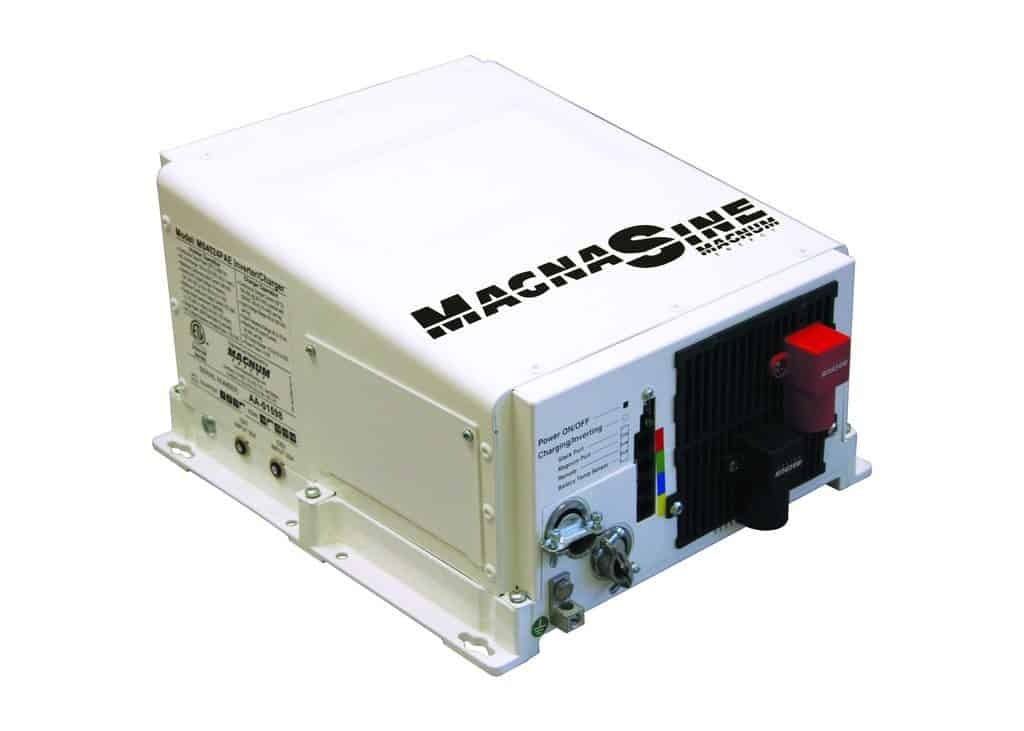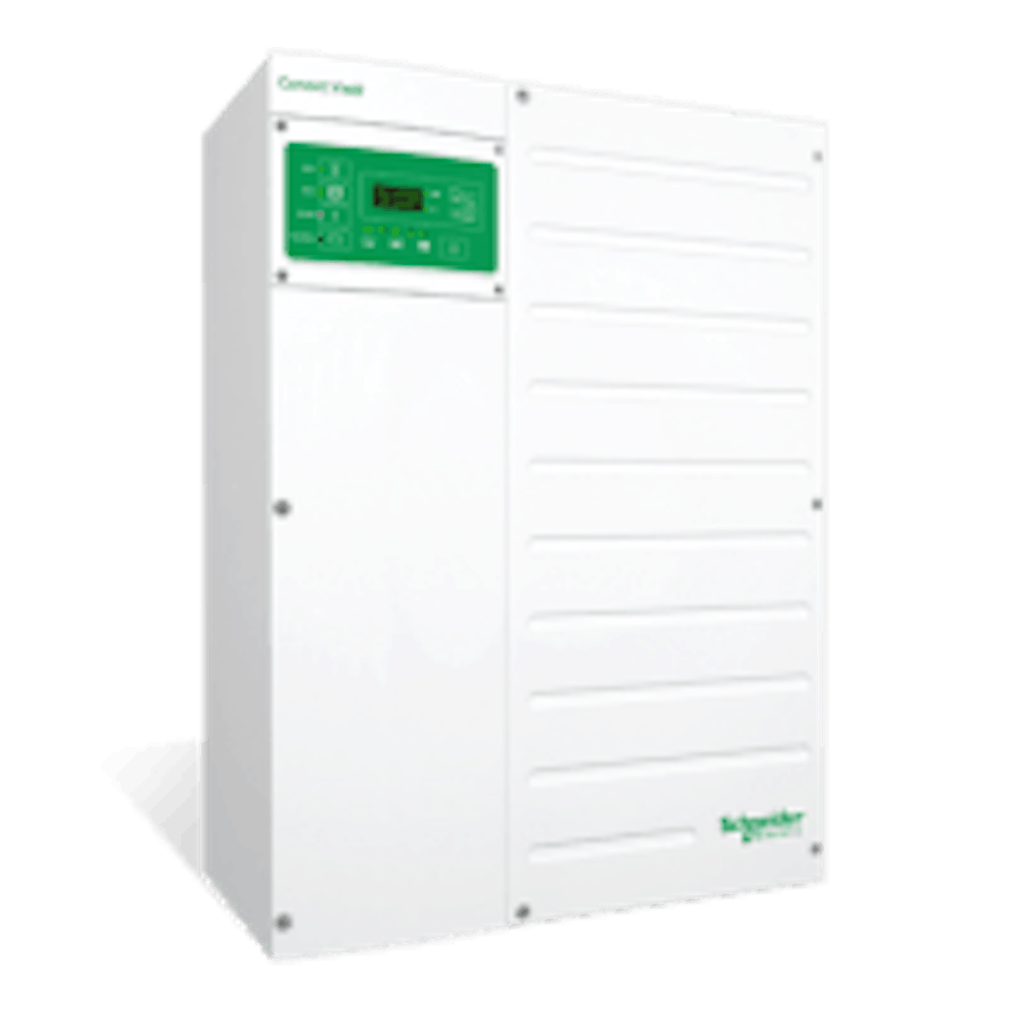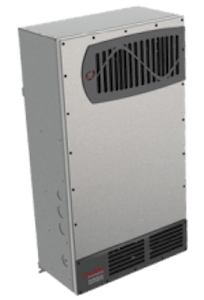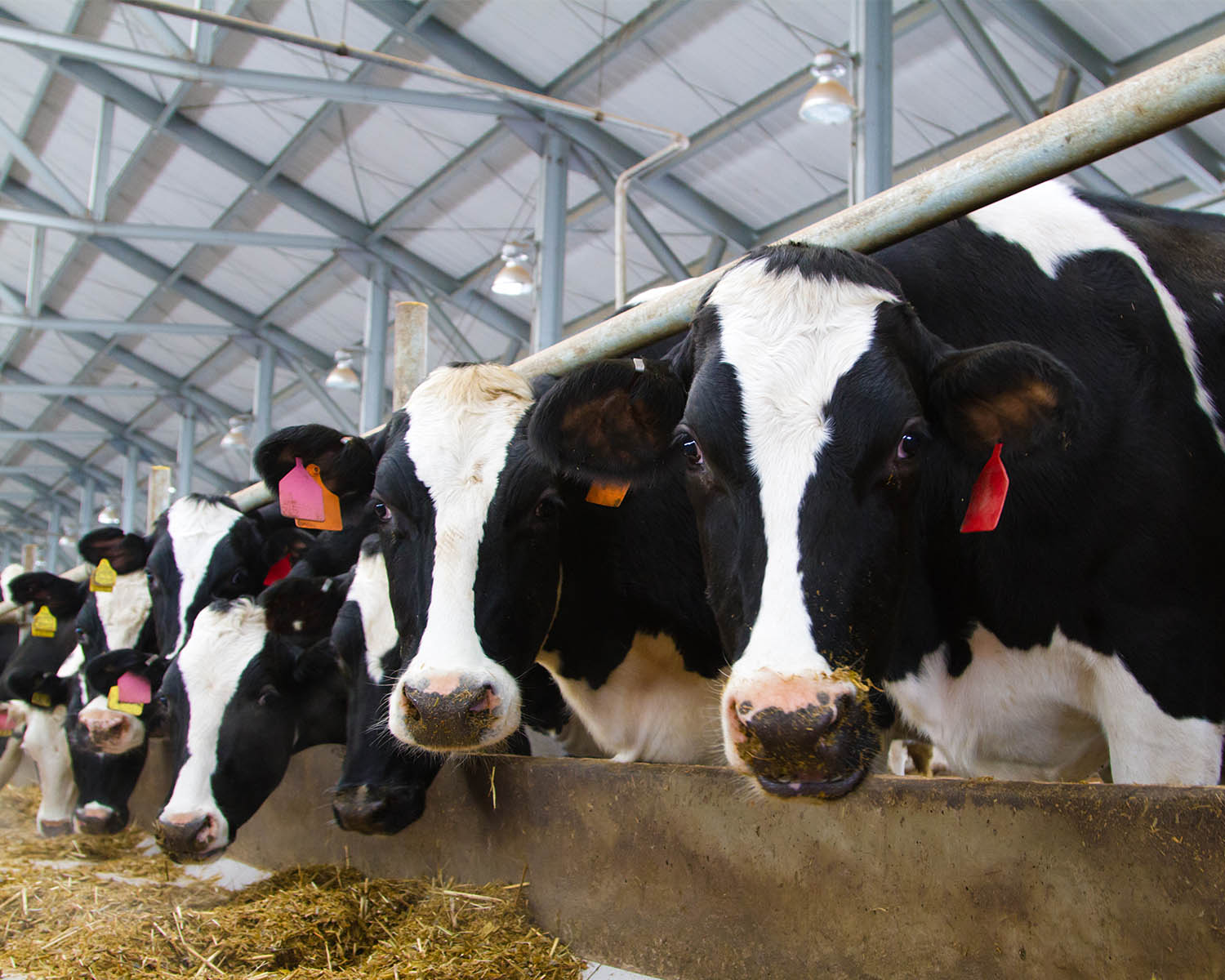What are the best off-grid solar inverters you can buy in 2021?
- For small applications: Morningstar SureSine 300W
- For cabins and modest off-grid homes: Magnum MS4024PAE
- For large off-grid applications: Schneider Conext XW Pro
- To pair with grid-tie systems for battery backup: Outback Radian
If you’ve spent any time researching solar energy, by now you’ve heard of an inverter.
The inverter is like your solar system’s brain. It manages your power flow, controlling two kinds of power.
DC—or direct current—power is the kind stored in batteries. It’s also the kind produced by solar panels.
But you can’t use DC power (directly) to power anything in your home. That’s where your inverter comes in.
Everything in your home uses AC—or alternating current—power. And an inverter takes DC power from your panels (or from batteries) and turns it into AC so it can be used for your fridge, lights, TV, and other household appliances.
Simple, right?
How is an off-grid inverter different from a grid-tied inverter?
A grid-tied inverter takes DC power from solar panels, turns it into AC, and sends it into the grid for credit.
Grid-tied inverters are simpler and easier to wire since there are usually only two main components—the inverter itself and your solar panels. (Some grid-tied systems are starting to incorporate energy storage, but most don’t have any batteries at all.)
But an off-grid inverter needs a battery bank to function.
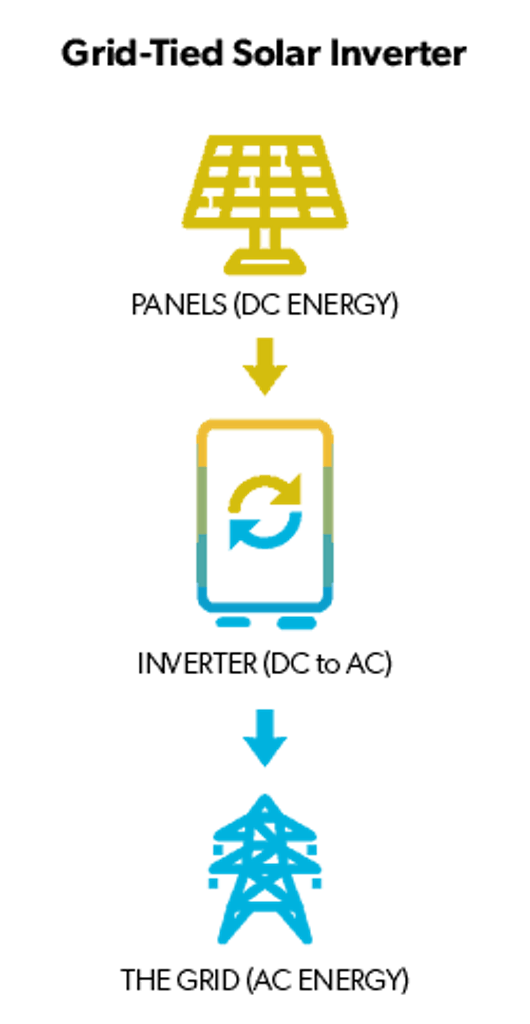
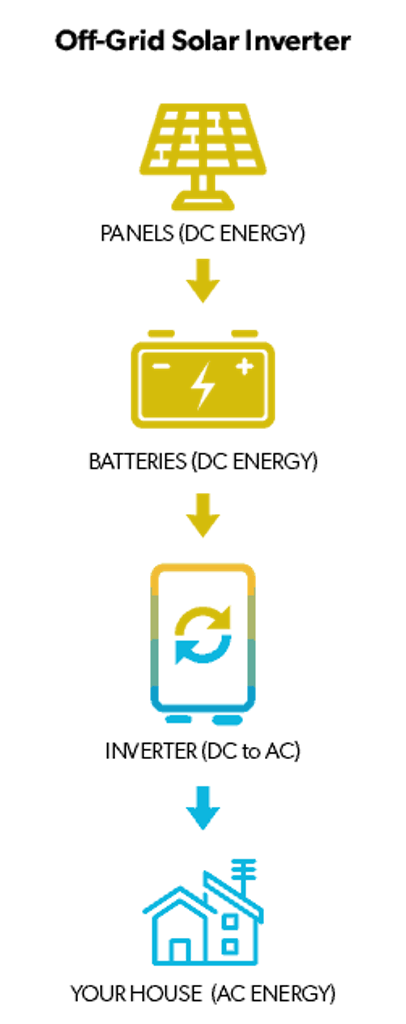
Here’s how it works: your solar panels feed DC power into the batteries. Then your inverter takes that power and “inverts” it, creating AC power for your home. This works essentially like a miniature power grid.
(In case you’re curious, no, your inverter won’t deplete your batteries provided your system is set up and designed right. The battery bank gets recharged by your solar panels and a charge controller, and by a backup generator in the winter months.)
As you might imagine, off-grid systems are more complicated, thanks to additional components like the charge controller, battery monitor, and additional AC and DC circuit breakers. All of these things tend to make off-grid systems more difficult to wire and install.
It can also be a challenge to buy off-grid equipment because there are a lot of associated accessories: remote controls, battery monitor, breakers and enclosures, surge suppressors, and so on.
Picking the right parts can be confusing enough—but there’s no more critical decision than buying the right inverter.
How to Pick the Best Off-Grid Inverter
Think About Size
The first thing to think about is how much power you need.
Fortunately, sizing off-grid inverters is straightforward if you know what appliances you’re going to use.
Add up the wattage of all your lights and appliances to calculate the number of watts you’d need if everything was used all at once. (No, you’re not likely going to use everything, but this is an easy way to be safe.)
Don’t forget to consider the voltage—although most appliances run on 120Vac, some appliances, such as well pumps, require 240Vac. Example: Let’s say you need 1,000 watts for your fridge, 500 watts for lights, and 200 watts for your phone & TV. That adds up to 1,700 watts. In this case, we’d suggest a minimum inverter size of at least 2,000 watts to give you a little extra headroom. (After all, you may add appliances in the future.)
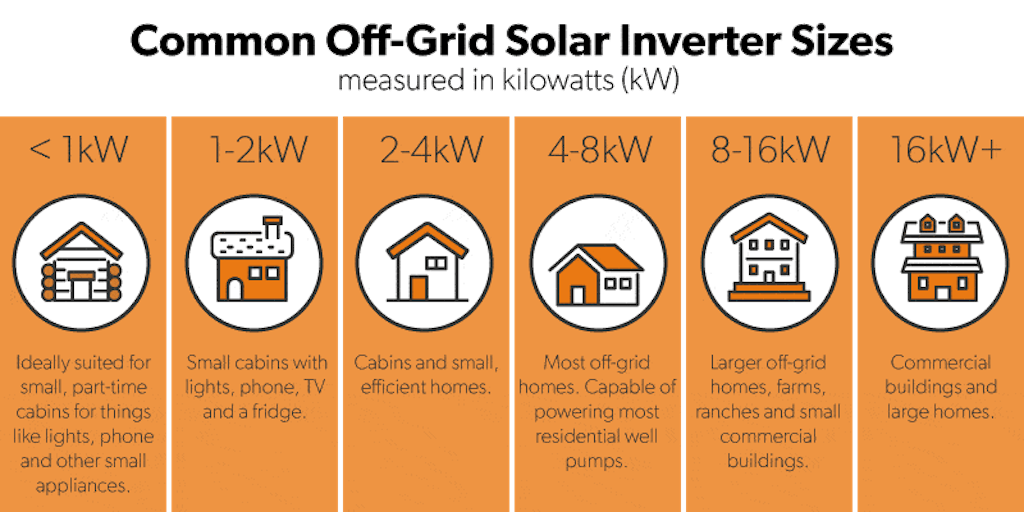
What’s the most popular size we sell? 4kW followed by 8kW. Different models and brands are available in various sizes and most of them can be stacked together for higher power output.
Consider Pure Sine Wave Instead of Modified Sine Wave
You may hear some manufacturers talk about pure sine wave inverters. You don’t need to understand exactly how these work—it’s enough to know that the power that’s put out by a pure sine wave inverter is “cleaner” than what you’d get from a modified sine wave inverter.
Pure sine wave inverters deliver higher quality power output, similar to (or better than) our power grid. Modified sine wave inverters are cheaper, but they deliver lower-quality power output.
For this reason, modified sine wave inverters can cause issues with certain appliances. Motors, pumps and compressors run hotter and wear out more quickly. Certain sensitive appliances like computers can be damaged, or they may not work at all. These inverters also typically cause background noise on a stereo, and reduced video and audio quality for certain TVs.
That’s why we don’t recommend modified sine wave inverters for most applications; most of our off-grid customers are use pure sine wave inverters to avoid these potential issues.
Need a quick way to tell the difference? Look at your inverter’s total harmonic distortion (THD) rating. THD is an indicator of power quality output and will be listed on the spec sheet of any decent inverter.Rule of ThumbTo avoid running into trouble, choose a pure sign wave inverter with THD of 5% or less.
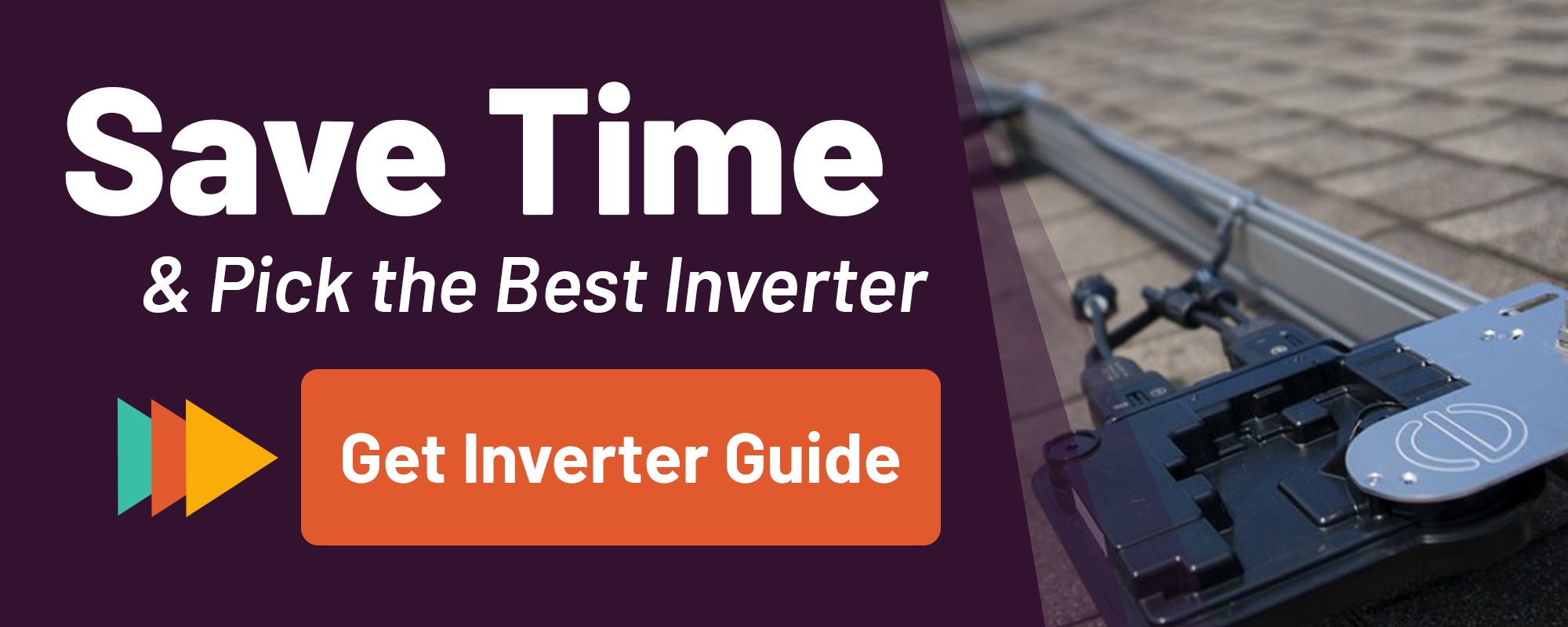
Look at the Technical Specs
Here are some other technical specs to consider:
- Efficiency. This is a measure of how much power from the batteries your inverter delivers to your home when it’s operating in perfect conditions. A good peak efficiency rating is around 94% to 96%.
- Self-consumption, or no-load current draw. How much power will your inverter consume just sitting there? Obviously you want this to be as low as possible.
- Surge capacity. How much short-term overload can the inverter handle before it “trips?” Some appliances, like pumps or fridges, need as much as 2x–3x their running power to start up.
- Battery charger output. Many off-grid inverters include a battery charger, which is used to recharge your batteries during the winter months with a backup generator. The battery charger will have a rating, usually measured in amps. Most decent off-grid inverters will have a battery charger in the range of 50-100 amps DC.
- Temperature range. Inverters are sensitive to extreme heat. Pay careful attention to the temperature range if you plan on installing your system in your garage or anywhere it could be exposed to temperature extremes.
- Warranty. Warranties start at 1 year and typically range from 3-5 years, with a few manufacturers offering a 10 year warranty extension option.
You can normally find information on all these features on the product spec sheets. Check with your solar tech for help comparing and picking the right inverter.
Research Features
Your inverter may need special features. Look into these ones:
- Battery charger. A charger allows your system to be charged from a backup AC generator. Most bigger inverters include this; these are called “inverter/chargers.”
- Grid-tied capability. Some off-grid inverters have the added capability of feeding power into the grid, here are a few examples:
- Outback FXR/VFXR
- Outback Radian
- Schneider XW+
- SMA Sunny Island
- Automatic generator start. Usually you’ll need an add-on accessory for this, although some inverters or charge controllers can take care of it.
Read Up on the Manufacturer
Knowing about the inverter manufacturer is also important. Check into their history and reputation. Off-grid inverters need to be on all day, 365 days a year, for several years at a time—so you’ll want to choose one from a manufacturer with a reputation for reliability.
In our experience, there are only a handful of companies making high quality inverters for this purpose:
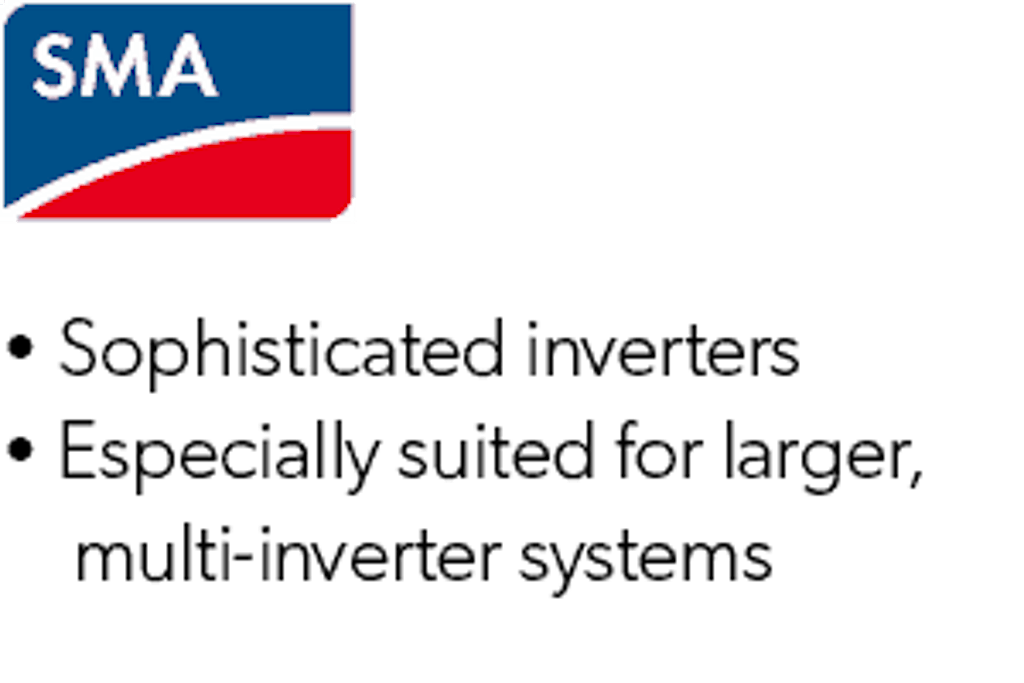
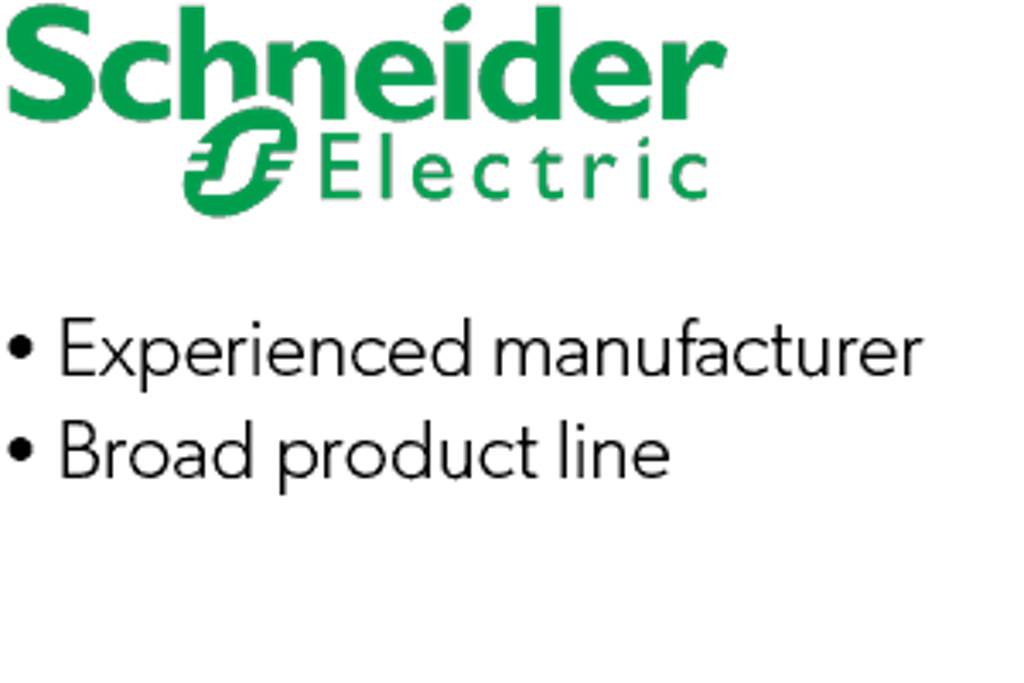

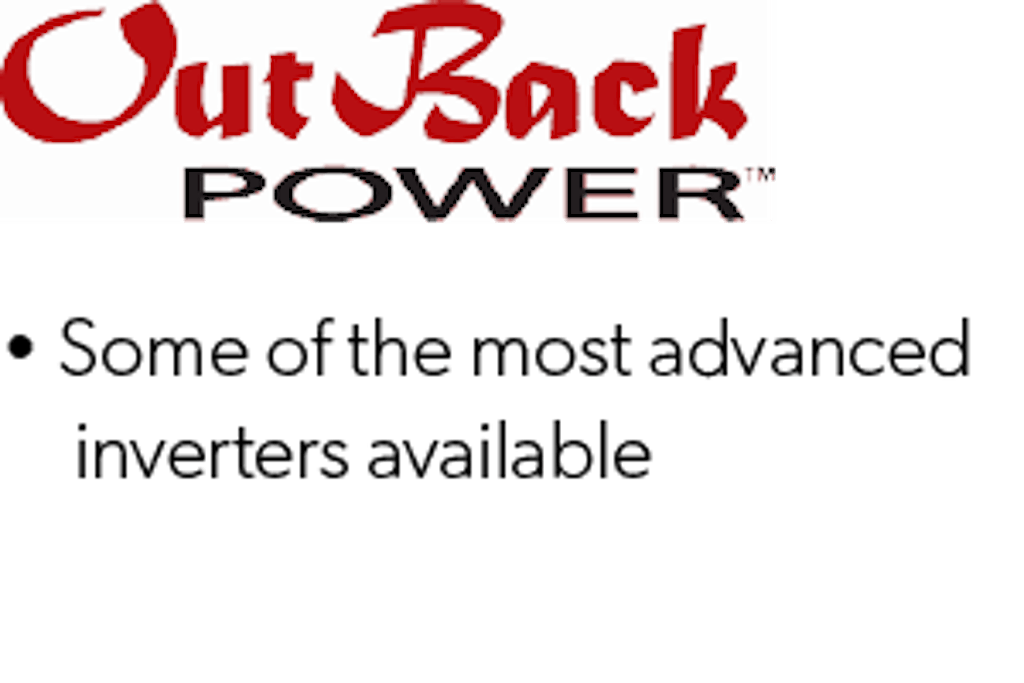
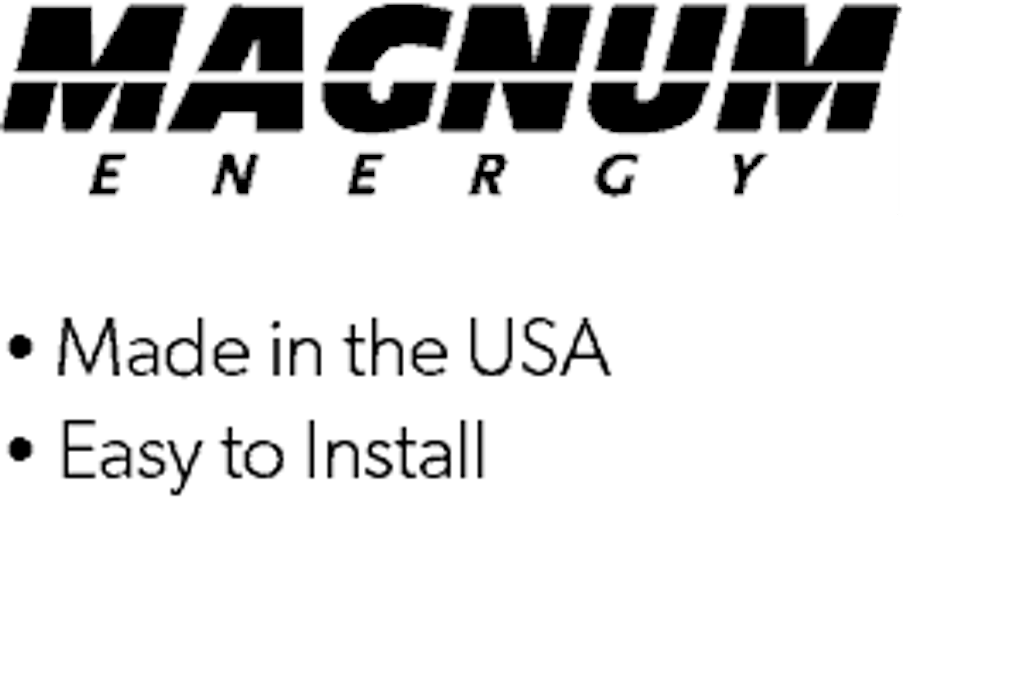
Make Sure it Has UL Listings and Certifications
Off-grid inverters have a few different certifications required in the US, for safety and also to ensure code compliance.
Inverters for your home need to be UL 1741 listed. Mobile inverters for boats and RVs should carry a UL 458 certification. There are a few other requirements for different applications such as UL 1778 for uninterruptible power supplies and KKK-A-1822E standard for emergency services, such as ambulances.
There are other standards required outside of the US such as CSA 107.1 in Canada and IEEE 1547 used internationally outside of North America.
Don’t Forget Price!
You also need to look at the price of the inverter system (including all required components)—as well as the features you get for that price.
Make sure to compare the price of all required components, including the remote control, circuit breakers, mounting plate, and anything else required to install the system.
Another Good Option: Using a Pre-Wired Power Center
A power center is a pre-wired off-grid inverter system that includes everything you need: an inverter, charge controller, remote control, and circuit breakers.
Most of the power centers we sell also include some additional components for monitoring and protection, including a battery monitor, and surge suppressors.
We assemble power centers with all of these components, and then wire them up and test on our workbench to make sure the system is wired correctly and working.
Buyers, especially those looking to DIY, love power centers because you can add them to a solar installation by making only a few final connections. (We even label the connection points to help make it even easier.)
The Best Off-Grid Inverters in 2021
Your choice of inverter really depends on your size requirements and the application, but here are some of our favorites:
Our Pick For: Best Small Off-Grid Inverter
- 300 watts 120Vac output
- 12Vdc battery bank
This inverter is small. At just 300 watts of output power, it can handle lights, charging phones and tablets, and an efficient TV—and that’s about it.
But the SureSine is renowned for being extremely durable. It’s also used for industrial applications, powering remote equipment in harsh conditions all over the world.
It’s efficient, with very low self-consumption, which makes it ideal for smaller systems like a hunting cabin.
It’s also perfect for industrial remote power systems that require a small amount of 120Vac power.
Our Pick For: Best Off-Grid Inverter for Cabins & Small Homes
The MS-PAE inverter series comes in two sizes: 4kW 24-volt, or 4.4kW 48-volt.
Magnum Energy inverters are fairly easy to set up and use. They have good surge capability and powerful battery chargers. They also have a nice Magnum Panel system that includes a back plate and breaker panel (to make a complete power center).
Installing these inverters on a Magnum Panel bumps up the standard warranty from three years to five.
There are accessories available, including a battery monitor, automatic generator start (AGS) and MagWeb kit for remote monitoring.
MS-PAE Magnum Power centers have been our best selling power centers for years, both for off-grid cabins and for small homes.
Multiple MS-PAE inverters can be stacked together—up to 4 inverters, or 17.6kW total—which makes this inverter also suitable for bigger off-grid homes.
The 4kW 24-volt model can work with smaller battery banks and solar arrays; that’s ideal for cabins.
Magnum inverters are available in a wide range of sizes, and they are relatively affordable and easy to set up, which makes them a great choice for off-grid cabins and homes.
Our Pick For: Best Large Off-Grid Inverter
- 6.8kW 120/240V output
- 48-volt battery bank
The XW Pro inverter has 6.8kW output power, and works with a 48-volt battery bank.
Multiple inverters can be stacked together, and groups of three can be combined for three-phase power systems.
Schneider offers several accessories including a power distribution panel, automatic generator start, and battery monitor. The Schneider XW Pro system really excels with bigger, multi-inverter systems.
Schneider supports multiple clusters of inverters for large industrial and commercial applications, up to 102kW output power. They also support Lithium batteries.
All of these features, plus the ability to stack clusters of inverters, make the XW Pro our choice for large off-grid power requirements.
BONUS PICK! Best Inverter for Grid-Tied Systems with Battery Backup
- Two models: GS4048A-01 and GS8048A-01
- 4-8kW 120/240Vac output
- 48-volt battery bank
The Outback Radian is an off-grid inverter that can also tie into the grid to sell your excess power.
This is the ideal option if you want the combination of battery backup and grid-tied solar, or if you’re off-grid but you think access to the grid will become available in the future.
The Radian inverter system includes advanced software, called Optics RE, for remote monitoring and control, allowing you to monitor your system, get alerts about any faults, and change settings remotely. It can also control generators for basic automatic start and stop.
Currently this is the only battery-based inverter approved for grid-tied interconnection throughout the US. It’s also the only grid-tied battery backup inverter available that complies with the newest standards in CA and HI for connecting grid-tied systems.
It’s available in two sizes, 4kW or 8kW, and multiple inverters can be stacked together for up to 80kW of power.
This is our best selling inverter for grid-tied with battery backup; most customers opt for either one or two of the 8kW inverters (either 8kW or 16kW.)



